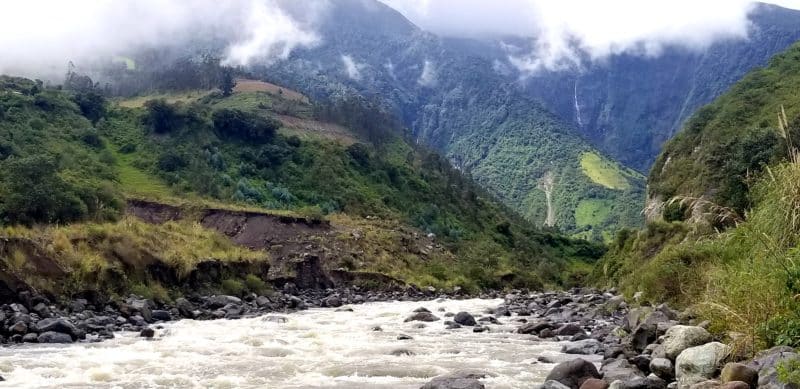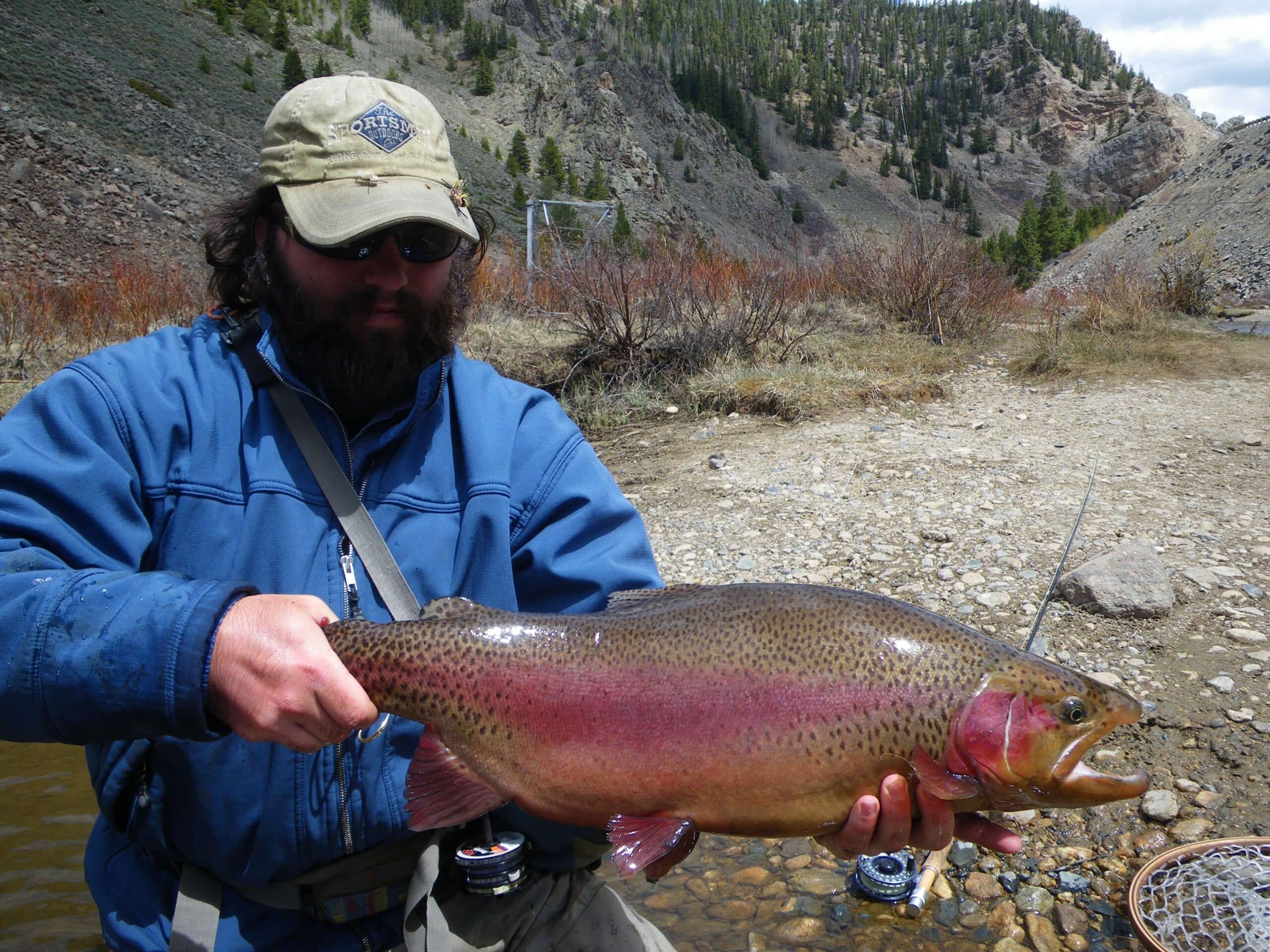Ecuador might be small as far as countries in South America go but the diversity of fisheries and environments packed within the borders is phenomenal. Immediately after crossing from Colombia, I jetted off on back roads that turned from pavement to cobble then again to dirt two tracks, rutted out from horse carts and old trucks. Chasing creek bottoms led to a few spots that were mostly blown with mud and vacant of trout. After testing the limits of my clearance and suspension, I returned to pavement near a church and hot spring site where I talked to an old man about the Spectacle Bears living high in the mountains, low wages for long hours of farming and the beauty of the surrounding mountains where crops are raised on the steepest of slopes.
A Week on the Farm
After a night at the hot springs, I gassed up and turned to the west on a long, winding mountain road that transitioned between pavement and boulder strewn obstacle courses at every landslide zone. The road was nearly empty of traffic and largely uninhabited except by an old woman herding a few cows on foot. It wound through a never ending sequence of switchbacks to a small village with a little used campsite on an organic farm with a beautiful creek cutting through the property. Owned by an American educated Ecuadorian and Englishman with 10 year old daughter who quickly befriended shale and took her on walks while I worked. She also taught me about the fruits, crops and helped pick avocados off the tree hovering above the van.
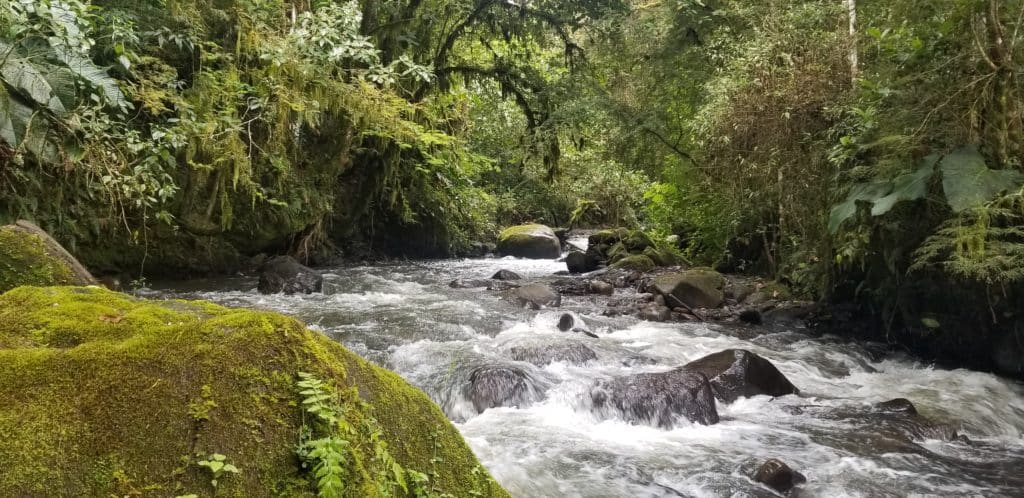
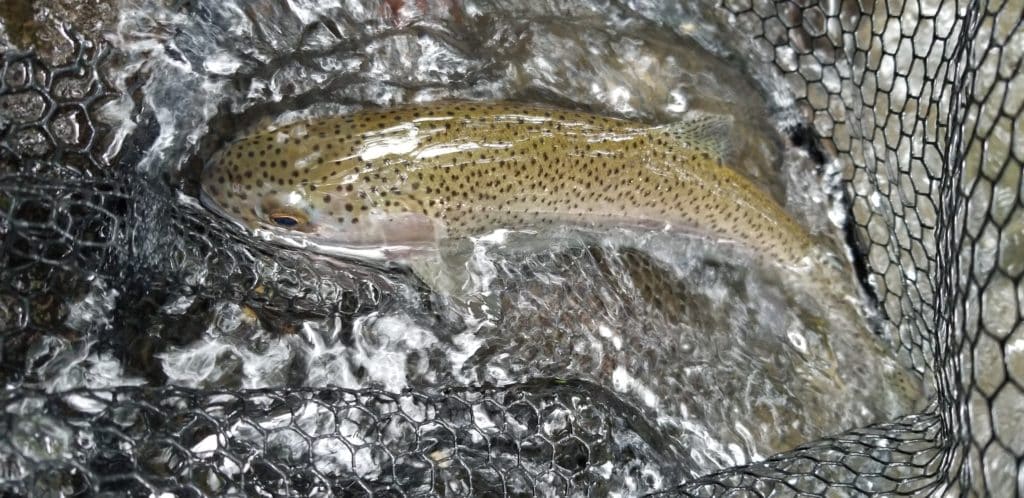
The stream was a short hike from the camp with a few hundred yards of fishable water before being snuffed out by thick brush and steep canyons on either end. I laid out a stimulator with a small glass rod and a rainbow trout appeared from behind a boulder, smashing the fly on the first cast. I fished every other inch of the stream without moving a single fish and it seemed vacant. Returning to the rock, I caught the same rainbow a second time, likely one of very few living in the accessible water. After a few more days of hiking and visiting with my new friend, it was time to move on.
Rock Walls and Blown Rivers
We drove back up and then down the winding road, catching the main highway and stopping to barter for alpaca scarves and blankets with the overly aggressive vendors at the Otavalo market. Next stop was an overnight at an unknown lake with an early morning skirting Quito and turning towards Baeza. The rain started as we climbed a steep mountain pass and the temperature dropped sharply enough to see snow fall on the surrounding peaks. We stopped at another hot spring located on high mountain stream for camp. This one was chock full of small rainbow trout, brightly colored and banded. Continuing the next day, we watched streams and rivers swell and blow out completely. Stopping at a rock climbing park for the next night, we hiked a few local trails and were surprised to see the rock walls illuminated by lights for night climbing although no climbers or other people were anywhere near. The rain kept on all night and the next day was spent driving past perfect trout waters that were unfishable with all the runoff. Eventually, the road led to Tena and stopover at a hostel to let the rain pass and gather info on the local rivers.
Floating the Jungle
After some research and talking with locals, Tena proved to be loaded with great rivers, all being influenced by the rain. Wrong season to explore the jungle but I managed to secure a few GPS points for remote lagoons with great fishing. One day, the rain lifted and I jumped on the chance to float one of the slower moving rivers. It was a perfect day in an environment completely foreign to me. Shale was kept close to the boat after warnings of dog eating Anacondas and we fished big streamers along downed logs and deep banks without moving a fish. At one point, a small deer swam the big river and crossed a few feet from the raft. Natives washed clothes on the banks, living traditional lifestyles in a place only accessible by watercraft.
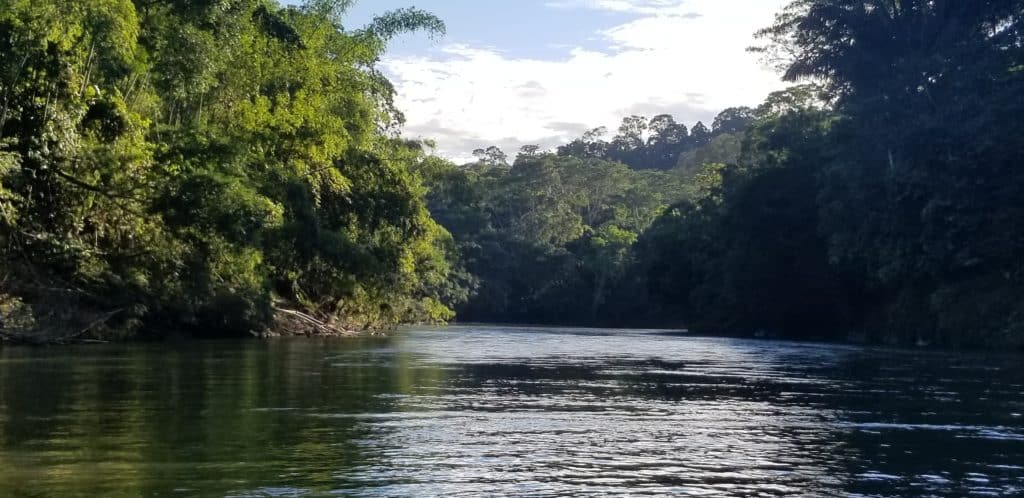 The experience left me wanting for more and was the perfect intro to jungle rivers. Unfortunately, the rain resumed that night and poured hard for a week, causing landslides and even a failed dam higher in the mountains. We drove through the rain, not knowing it was a major event with landslide danger at every turn. Driving into Banos, the dam was full release, spewing a mind boggling amount of water. It looked overwhelmed. Every waterfall was full force, showing the ground had absorbed it’s maximum. The driving had me worn out and we pulled into Abby’s hideaway, planning for a week of camping.
The experience left me wanting for more and was the perfect intro to jungle rivers. Unfortunately, the rain resumed that night and poured hard for a week, causing landslides and even a failed dam higher in the mountains. We drove through the rain, not knowing it was a major event with landslide danger at every turn. Driving into Banos, the dam was full release, spewing a mind boggling amount of water. It looked overwhelmed. Every waterfall was full force, showing the ground had absorbed it’s maximum. The driving had me worn out and we pulled into Abby’s hideaway, planning for a week of camping.
Banos Basecamp
That week morphed into nearly two months of hikes and fishing trips between downpours. I stayed long enough to meet locals who took me to a few different rivers where I caught a few trout on flies and they caught more than a few on salmon eggs.
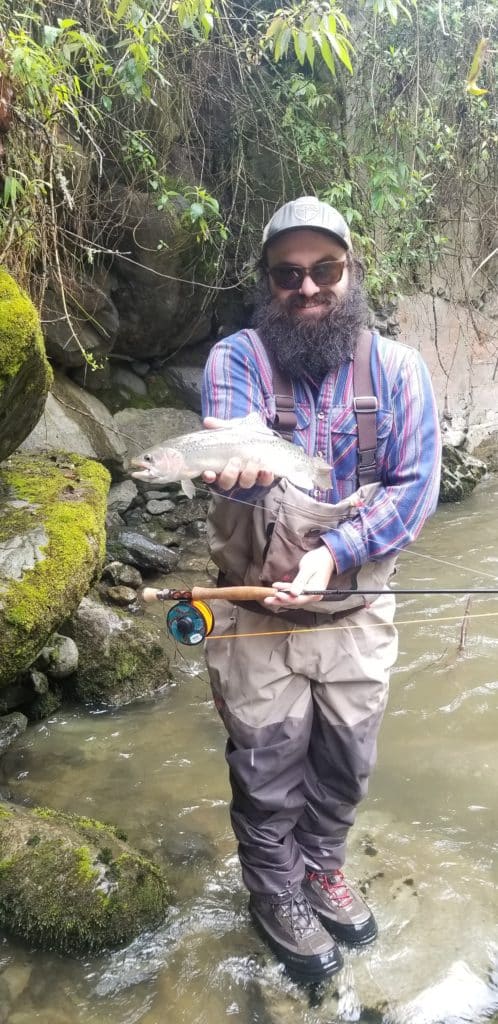 Abby led the way on multiple hikes, including one to a secret hot spring pool on the side of a volcano. We even returned to Tena and I ran the Jatunyacu in a duckie alongside a group of talented kayakers. Banons was a great stop with good food and a perfect campsite above Pastaza Canyon. After working out a few kinks on the car, I jetted to Cuenca and pushed south into Peru where I had a month to burn before making my final dash into Argentina and south to Patagonia.
Abby led the way on multiple hikes, including one to a secret hot spring pool on the side of a volcano. We even returned to Tena and I ran the Jatunyacu in a duckie alongside a group of talented kayakers. Banons was a great stop with good food and a perfect campsite above Pastaza Canyon. After working out a few kinks on the car, I jetted to Cuenca and pushed south into Peru where I had a month to burn before making my final dash into Argentina and south to Patagonia.
